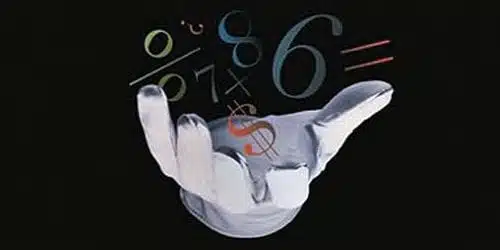
Numbers lie. How so? Because they always act more innocent than they really are.
As professor of journalism Charles Seife explains in Proofiness: The Dark Arts of Mathematical Deception, numbers as used in everyday life are accessories to objects, people, money, votes, and everything else that is endlessly shady and complex. This is perhaps better grasped with humor than with respect, and so Seife introduces us to ‘proofiness’, the easily manipulated, fake authority of figures, and its associate ‘randumbness’, the tendency to identify patterns in data where none really exist.
It isn’t just that numbers operate in a worldly reality, but also that they are handled by human beings with incalculable flaws, limitations, and interests. To begin with, every measurement, no matter how carefully conducted, is always at least ‘a little bit fuzzy, a little bit uncertain’ (10). Fuzziness, we all know, attracts dirt.
One case Seife thoroughly sweeps through is the infamous Florida debacle during the 2000 Bush v. Gore presidential election. Since the disputed number of votes was so small that it fell within the likely counting error, the result was really a tie, and the recount a wasteful charade. Seife insists that the winner, as Florida’s law disposes in the event of a tie, should have been picked by drawing lots. What he does not say, but readers can figure out for themselves, is whether the Electoral College system by which Americans choose their presidents is itself riddled with ‘proofiness’.
In addition to the ever-present danger of statistical boo-boos, there are even trickier qualitative problems involving intention and meaning. The uncertainty surrounding opinion polls and surveys, for instance, goes far beyond any issues of measurement; it reaches into such intangibles as the wording of questions and the many other factors, conscious and unconscious, that go into respondents’ answers. Welcome to the smoke-and-mirrors-filled, dodgy den of interpretation.
Finally there’s the outright mathematical fraud Seife calls ‘fruit-packing’ — cherry picking, comparing apples to oranges, and polishing produce through clever misrepresentation of data. All of these he illustrates with such juicy examples as the gerrymandering of electoral districts, the Vietnam War body counts, the OJ Simpson acquittal, the alleged perils of marijuana smoking, the space shuttle program, and Al Gore’s projections of sea level rises. Back in the 1950s, Darrell Huff already busted this kind of numbers’ racket in his classic How to Lie with Statistics; but evidently the forces of evil aren’t so easily defeated.
In the end, what we learn from this book is the need for eternal vigilance. Holding ‘proofiness’ at bay, Seife suggests, requires citizens to educate themselves in all things numerical. A healthy democracy depends on this, he tells us — though, we should add, it depends on much more, as well. Numbers may be nasty little cheats; but good math can help us think critically in a world that is inherently deceptive.
